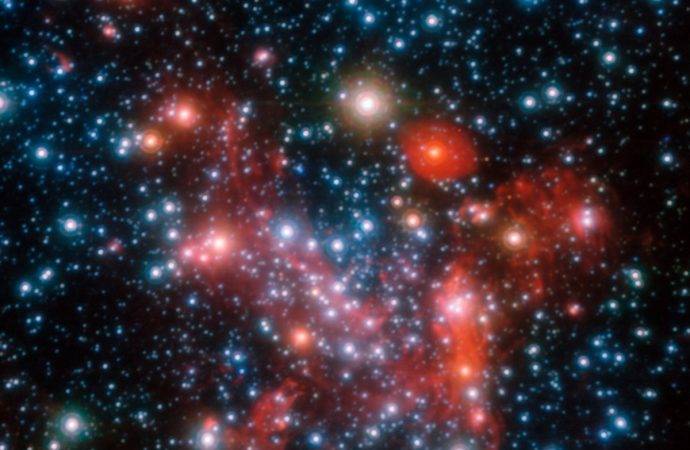There’s a party in the galactic centre. We may have found the first solid evidence of a dense conference of stars around the Milky Way’s heart, which may one day help us observe the supermassive black hole living there.
The structure is known as a stellar cusp, and it has played hide-and-seek with astronomers for more than a decade. It was first proposed in the 1970s, when models predicted that stars orbiting a supermassive black hole would jostle around every time one was devoured. Over the course of a galaxy’s lifetime, this should leave an arrangement with many stars near the black hole and exponentially fewer as you move farther away.
But it has been hard to prove this happens. Other galaxies are too far away for us to see their centres as anything more than fuzzy blobs. Observations in the early 2000s seemed to support a cusp in the Milky Way, but better data showed that we had been tricked by obscuring dust.
Now, Rainer Schödel at the Institute of Astrophysics of Andalusia in Granada, Spain, and his colleagues have combined images of the galactic centre to map faint old stars, which have been around long enough to settle into a cusp. They also studied the total light emitted by all stars at varying distances from our galaxy’s central black hole, and compared the results with simulations.
Perfect probes
These methods point to the same conclusion: the cusp exists. Around our galaxy’s central black hole, the density of stars is 10 million times that in our local area, says Schödel, who presented the work on 7 September at the LISA Symposium in Zurich, Switzerland.
Many of those stars will eventually explode as supernovae, leaving behind black holes with masses comparable to that of our sun. If one of these merges with the black hole in the galactic centre, it will emit telltale gravitational waves that can be picked up by future observatories, like the proposed Laser Interferometer Space Antenna (LISA). Those waves will help figure out the mass, rotation rate and other properties of the black hole with extreme precision.
“These stellar mass black holes would be absolutely perfect probes of space-time around the supermassive black hole,” Schödel says.
If the Milky Way has a cusp, then it’s likely that other galaxies do as well. That’s good news for an observatory like LISA, which may be able to pick up waves from dozens or even hundreds of interactions between stellar mass and supermassive black holes each year.
The work is a significant advance over previous methods and seems to support the existence of a cusp, says Tuan Do at the University of California, Los Angeles. “The galactic centre is always surprising us though, so I think it would be great to take more observations to verify that there is a cusp of faint old stars,” he says.
The next generation of enormous observatories, like the Thirty Meter Telescope and Giant Magellan Telescope, will see an order of magnitude more stars than current observatories can. They will almost certainly observe the cusp if it’s there, Schödel says.
Source: New Scientist

































Leave a Comment
You must be logged in to post a comment.